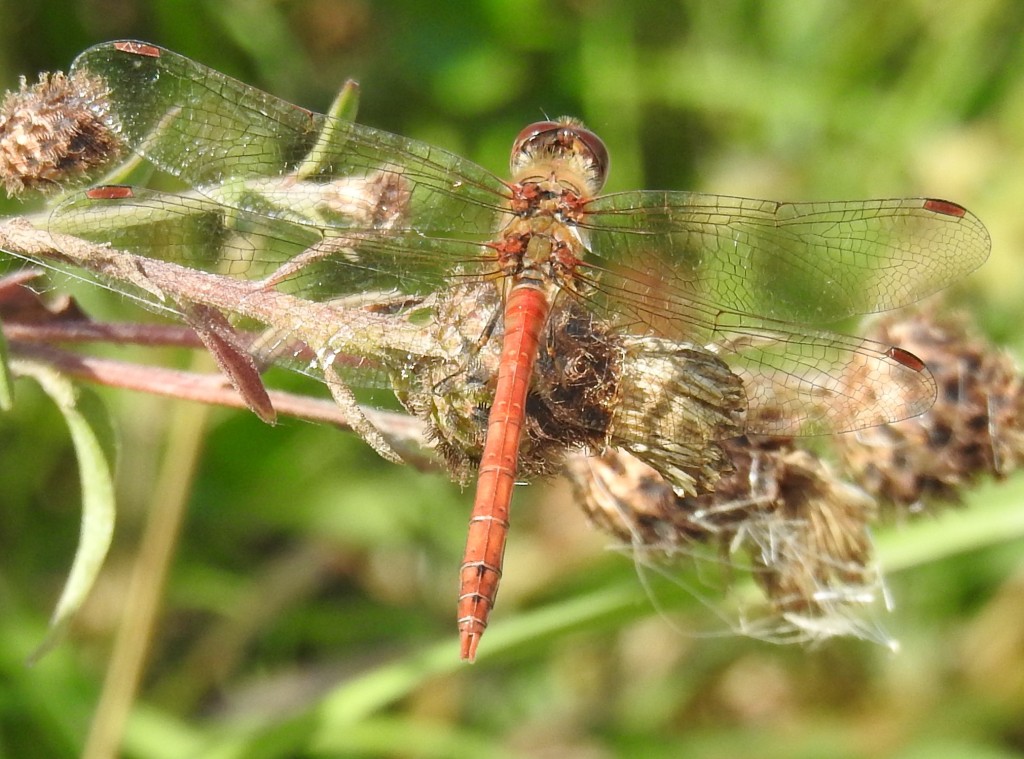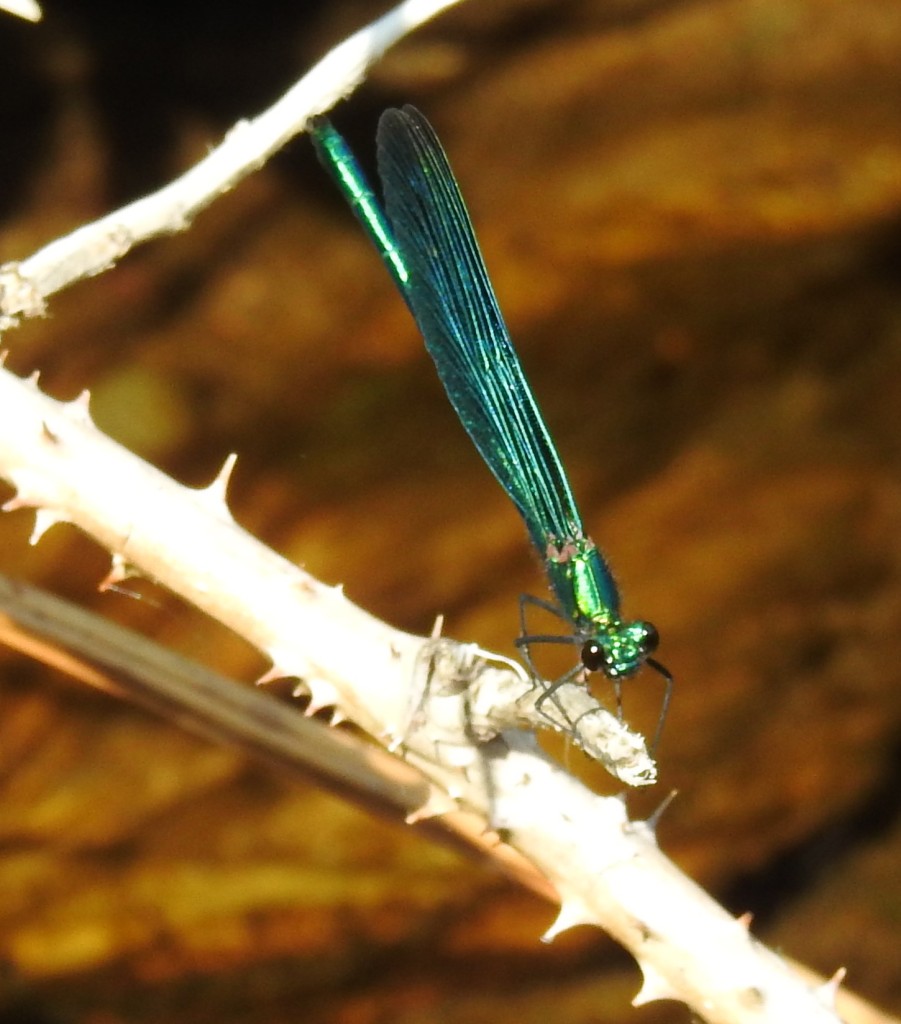It is quiet in the woods — the leaves of the canopy obscuring the birds hopping silently, keeping a low profile as they raise their young and avoid predators. But there is a hum of insects today in the swingeing heat — bumble bees, honey bees, wasps, flies and beetles dance in the sunbeams that penetrate the woodland. Clambering over the late summer blooms, they feed and pollinate as they go, pausing to clean the stick blackberry juice from their feet.
Near the ditches and the ponds the Dragonflies patrol — a great big hawker zooms over the pond then starts to patrol its margins hovering a meter or so above the water, whisking himself away in a flash of yellow and blue just as I find him in the view finder. Fortunately Bill has had more luck (or expertise) and these are mainly his photos.
Dragonflies and damselflies spend most of their lives in water as fierce, carnivorous larvae or nymphs. Damselfly larvae have fanned tails which are gills but dragonfly nymphs take in water through their rectums where they have internal gills (when in difficulties they can fire out water and jet propel themselves from danger). They gradually grow, moulting their skins as they get too small, until just before their final moult, when they heave themselves out of the water up some twig or reed and start to breath air — then something amazing happens.

They do not pupate like butterflies –withdrawing into a casket to re-organise their bodies for an aerial life. The skin of the living nymph simply splits and its adult self hauls itself out!


Adult dragonflies like the Southern Hawker are very territorial so you will usually only see one on a particular stretch of pond bank except when an interloper enters his territory when there will be an aerial skirmish — a dog fight — the resident male seems usually to prevail and the interloper withdraws to find another territory. When a female appears the male will try to mate with her, grabbing her by the scruff of the neck with claspers on the end of his abdomen. If she is willing she curls her abdomen round to the accessory genitalia on the ventral side of his abdomen just below his waist where he keeps his sperm — thus they form a conjugal wheel or copula. You will see them flying, conjoined like this in tandem. They lay their eggs in water or on submerged vegetation depending on the species. Sometimes the male guards the female while she lays but in some species you will see them, still in tandem — the male holding the female by her neck and dipping her tail into the water to lay, then pulling her out — escaping the powerful surface tension of the water — to dip her in at another location, spreading their bets and increasing the chances that their offspring will survive.



Different species of dragonflies fill different niches in the water-side world. Hawkers, skimmers and darters prefer standing water whereas the large red damselflies like bogs and ditches. The beautiful demoiselle (that’s its name) and the banded demoiselle like running water like the stream in our valley. Damselflies perch with their wings folded, are smaller and daintier, flutter more weakly and have eyes that are more widely spaced — the eyes of dragonflies meet in the middle.


You will see lots of blue damselflies around the edge of our pond — they are not so territorial and don’t spend their time fighting.




Poor townie that I am I thought a dragonfly was a dragonfly…..now I know better. Great photos. Stay well Steve Lacey
Thanks Steve — been difficult today — the thunder and lightning seem to affect my computer — I think I need a new one — this was an uncorrected draft which wasn’t quite finished and has now gone on strike so it must stand! Thanks for being such loyal readers!
Another nicely crafted, informative article. Thankyou Diana.
Thanks Tim, it’s good to know that they are read and appreciated and that people don’t just scroll down the pictures!